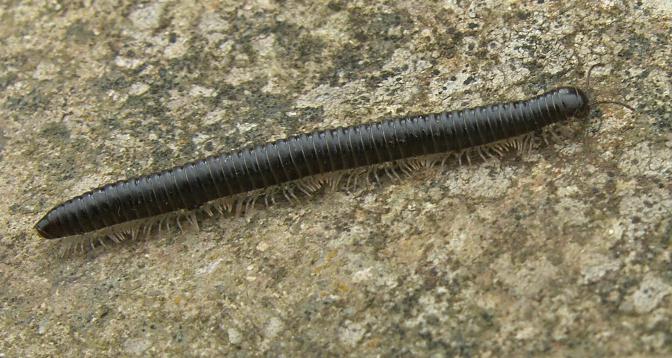
Millipedes, are found in most parts of the world, they are Myriapods, which means they have a short head, long segmented body and many pairs of legs. Each body segment has two pairs of legs, as do all members of the class Diplopoda. When they walk each pair of legs is lifted at the same time, moving along in a wave. Their hard exoskeleton helps to protect them against predators.
When threatened, they coil up into a ball to protect the more vulnerable underside. Eyesight is poor to non-existent, they sense by way of their antennae which continually tap the ground as the millipede moves along. They are very clean creatures spending a great deal of time cleaning and polishing the various parts of their bodies, and have a special brush-like group of hairs on the 2nd or 3rd pair of legs which are used in cleaning the antennae.
Being detritovores, rotting wood & leaves form the main part of their diet, breaking down dead plant material into small pieces. Bacteria and microfungi feed on detritovore faeces, so they are an important link in the recycling of organic matter in the soil.
Generally considered to be harmless, millipedes are can be pests in the seedbed attacking the roots of young seedlings. So, as with Woodlice, keep the areas around vulnerable plants free of debris. Not a major problem in the garden causing some damage to the roots of strawberries and cucumbers. Sugar beet is the main commercial crop to suffer from millipedes. They may not cause the initial damage, but enter holes created by slugs and continue to eat.
Their thick black cuticle makes chemical control difficult. Remove or crush them if they are causing a problem where you are growing seedlings. Keep such areas clear of debris where they can hide.
Back to GARDEN CREATURES